What Is Organic Matcha Green Tea – An Exotic Antioxidant
Want to know the scoop about what is organic matcha green tea? Here’s the answer. It is a finely ground powder made from specially grown and processed green tea leaves. Originating in Japan, matcha has been an integral part of traditional Japanese tea ceremonies for centuries. 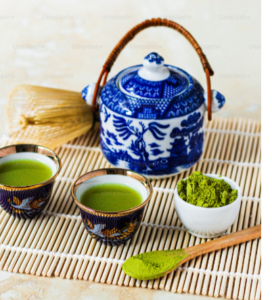
What is Organic Matcha Green Tea?
The term “matcha” literally translates to “powdered tea” in Japanese. If you need to answer the question – what is organic matcha green tea, you are in the right place at the right time.
Unlike regular green tea where the leaves are steeped and discarded, matcha involves consuming the entire tea leaf in powdered form, resulting in a more concentrated and potent tea experience. My favorit brand is Uncle Lee’s Green Tea.
Matcha is Cultivated and Processed Organically
Organic matcha cultivation begins with carefully selected tea plants, typically shade-grown for about 20-30 days before harvest. This process increases chlorophyll production, enhances the amino acid content, and gives matcha its distinctive bright green color.
The youngest, most tender leaves are hand-picked, quickly steamed to prevent oxidation, then dried and aged in cold storage to deepen the flavor.
The Leaves are Ground Into Powder
Finally, the leaves are stone-ground into a fine powder. In organic production, this entire process is carried out without the use of synthetic fertilizers, pesticides, or chemical additives, relying instead on natural farming methods and pest control techniques.
Organic Versus Conventional Matcha
Organic Matcha
The primary difference between organic and conventional matcha lies in the cultivation and processing methods. Organic matcha is grown without synthetic pesticides, herbicides, or fertilizers, focusing instead on sustainable farming practices that maintain soil health and biodiversity. 
Conventional Matcha
Conventional matcha may involve the use of chemical inputs to increase yield and combat pests. Organic matcha is often considered purer and potentially healthier due to the absence of chemical residues. Additionally, organic farming practices are generally more environmentally friendly, promoting ecosystem health and sustainability. Next, we examine the nutrution benefits of matcha.
Nutritional and Health Benefits
Firstm matcha is renowned for its exceptional antioxidant content, particularly catechins, a class of plant compounds with powerful antioxidant properties. The most abundant catechin in matcha is epigallocatechin gallate (EGCG), which has been extensively studied for its potential health benefits.
Second, these antioxidants help protect the body against free radical damage, which is associated with various chronic diseases and premature aging. The antioxidant content in matcha is significantly higher than that found in other green teas.
Therefore consuming the whole leaf provides a more concentrated source of these beneficial compounds.
Essential Vitamins and Minerals
Matcha is a nutrient-dense tea, containing a variety of essential vitamins and minerals. It is particularly rich in vitamin A, which supports eye health and immune function, and vitamin C, an important antioxidant that aids in collagen production and immune support. Matcha also contains important vitamins such as:
- Vitamin K (important for blood clotting and bone health)
- Mineral content potassium (helps regulate blood pressure)
- Small amounts of calcium, iron, and magnesium
- L-theanine, an amino acid (promotes relaxation without drowsiness)
- Promotes other health benefits
Sustained Energy Boost
Matcha has been associated with numerous health benefits. Its caffeine content, combined with L-theanine, provides a sustained energy boost and improved mental focus without the jitters often associated with coffee. It also protects your telemeres on a cellular level.
Boosts Metabolism
The high concentration of catechins, particularly EGCG, has been linked to increased metabolism and fat oxidation, potentially aiding in weight management. Regular consumption of matcha may also support heart health by helping to reduce LDL cholesterol and triglycerides while increasing HDL cholesterol. 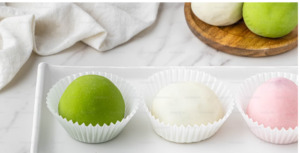
In fact, I can attest to this fact. Matcha tea improved my mental alertness 100%. Next, I’ll share some of my personal experiences with matcha green tea.
My Personal Experience with Matcha Green Tea
In addition, matcha tea also enhances mental alertness and wellness. I am not going to lie, I had no idea what matcha tea was until around 2015, while working at my day job at a dual diagnosis center in Lake Forest, California. Honestly, this was the best job I have ever had in my life.
Anyways, my colleagues, co-workers, and I got to run educational sessions, give pep talks and attend mandatory mental wellness seminars. Plus, we also got to interact with families and interdisciplinary teams of medical and professional specialists in the behavioral sciences. At times, things got janky. The environment could get very stressful.
Matcha Tea Helps During Stressful Times
Needless to say, this job is not for the faint of heart. There are good and not so good days. We are trained to be able to handle the worst case scenario situations. This is where my matcha tea breaks came in handy.
There was a new local barista nearby. However, they also served Matcha tea due to popular demand. It was the best matcha green tea in town.
Matcha Green Tea, My PNS and Grad School
For me, matcha tea seemed to help with my parasympathetic nerve system (PNS) during the “rest and digest stage.” We’ll talk about this more in another post. For now, let’s just dive into how I first happened upon Match tea back around 2012.
At the beginning of Grad school, it was mandatory to have a Facebook account. Otherwise, I would have never signed-up. From Facebook, I segued into another platform called Instagram. The rest is history.
I am a very private person. However, once I got on social media, I have never looked back. This is actually where I first heard about Matcha Tea. 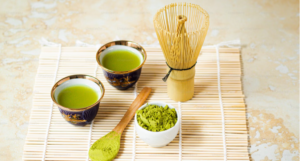
My First Encounter with Matcha Tea
One of my mentors at the time was an Instagram influencer named Whitney. She had an astronomical following back in 2012. Whitney is also the person I blame for starting my podcast.
But, most importantly, Whitney is responsible for my love of matcha green tea. It is still my regular go-to, especially after a long, stressful day. However, you must be selective when choosing your tea of choice.
The Art of Selection the Best Matcha
The key is to make sure you are getting an authentically-made matcha. Perfecting the art of making matcha tea takes skill and patient. Not all matcha teas are created equal. These treats have really improved not only my focus and motivation, but they have also improved my overall health.
By the way, Whitney and I are still good friends. So, if you’re looking to kick it up a notch or two, try the organic matcha teas. They’re pretty awesome. In all sincerity, matcha tea is a real winner and from my perspective, it does support one’s heart health.
Matcha Green Tea Supports Heart Health
Some studies suggest that the antioxidants in matcha may have anti-inflammatory effects, contributing to overall health and potentially reducing the risk of chronic diseases.

Scientific Studies Support Health Claims
Numerous scientific studies have explored the potential health benefits of matcha. A study published in the American Journal of Clinical Nutrition found that consuming green tea extract rich in catechins led to a significant increase in energy expenditure and fat oxidation.
Prevents and Alleviates Chronic Diseases
Another study in the Journal of Chromatography A demonstrated that matcha contains up to 137 times more antioxidants than regularly brewed green tea. Research published in the Journal of Medicinal Food suggested that matcha consumption might help prevent and alleviate various chronic diseases, including cancer, cardiovascular disease, and type 2 diabetes.
While more research is needed to fully understand the long-term effects of matcha consumption, current studies provide promising evidence for its health-promoting properties.
How to Prepare and Enjoy Organic Matcha
Traditional Japanese Method
The traditional Japanese method of preparing matcha, known as “chanoyu” or the tea ceremony, is a precise and ritualistic process. It involves using a bamboo whisk (chasen), a tea bowl (chawan), and a tea scoop (chashaku).
Sift Matcha Powder Into Bowl
First, the matcha powder is sifted into the bowl to prevent clumping. Hot water (about 70-80°C) is added, and the mixture is whisked vigorously in a zig-zag motion until it becomes frothy with a smooth, creamy texture.
Produce Usucha or Koicha
This method produces “usucha” or thin tea. For “koicha” or thick tea, used in formal tea ceremonies, more matcha powder is used with less water, creating a paste-like consistency. 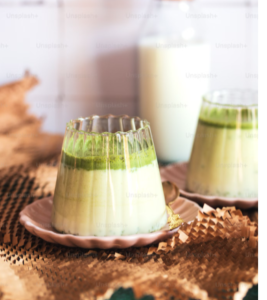
Modern Twists and Popular Recipes
While traditional preparation methods remain popular, matcha has found its way into numerous modern recipes and beverages. Matcha lattes, combining matcha with steamed milk and sometimes a sweetener, have become a staple in many cafes.
Matcha is Very Versatile
Culinary enthusiasts incorporate matcha into a wide array of dishes, from smoothies and baked goods to savory dishes and ice creams. Matcha-infused cocktails and non-alcoholic beverages are also gaining popularity. Some creative uses for matcha include all of the following:
- Energy balls
- Chia pudding
- Matcha-infused salad dressings
- High-Quality Smoothies
Tips for Selecting High-Quality Organic Matcha
When selecting organic matcha, look for vibrant green color, which indicates freshness and proper processing. High-quality matcha should have a fine, powder-like texture without any visible particles. The aroma should be fresh and grassy, without any musty or stale notes.
Consider the Grade of Matcha
Ceremonial grade is the highest quality, suitable for traditional tea preparation, while culinary grade is more suited for cooking and baking. Always check for organic certification and, if possible, opt for matcha sourced from reputable tea-growing regions in Japan, such as Uji or Nishio.
Pairing Matcha with Other Foods and Beverages
Matcha’s unique flavor profile, characterized by umami, slight bitterness, and sweetness, pairs well with a variety of foods and beverages. In Japanese cuisine, matcha is often paired with wagashi (traditional sweets) to balance its slight bitterness.
It complements chocolate, nuts, and dairy products well, making it a popular addition to desserts. For savory pairings, matcha can be incorporated into dips, dressings, or used as a seasoning for proteins.
In terms of beverages, matcha blends nicely with plant-based milks, fruit juices (especially citrus), and even certain cocktails for those who enjoy alcoholic beverages. Matcha tea smoothies are also amazing.
Sustainability and Ethical Considerations
Environmental Benefits of Organic Farming
Organic farming practices used in matcha production offer several environmental benefits. By avoiding synthetic pesticides and fertilizers, organic farming helps preserve soil health and biodiversity.
Organic Farming Promotes a Balanced Ecosystem
It promotes a balanced ecosystem where beneficial insects and microorganisms thrive, naturally controlling pests and diseases. Organic farming methods often include techniques like crop rotation and composting, which improve soil structure and fertility over time.
Promotes Environmental Health
Additionally, the absence of chemical runoff from organic farms helps protect nearby water sources and aquatic ecosystems, contributing to overall environmental health.
Matcha Has Organic Certification Standards and Labels
Organic matcha is certified according to strict standards that vary by country or region. In the United States, the USDA Organic seal indicates that the product contains at least 95% organic ingredients and adheres to specific production and handling requirements.
Japanese Agriculture Standards Certification
In Japan, the JAS (Japanese Agricultural Standard) organic certification is used. The European Union has its own organic certification standards. These certifications typically require regular inspections and documentation to ensure compliance with organic farming practices. 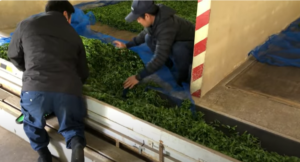
Certifications Prevent the Use of GMOs
Certifications also prohibits the use of genetically modified organisms (GMOs) and has strict regulations on allowed inputs and processing methods.
Impact on Local Farming Communities
The production of organic matcha has a significant positive impacts on local farming communities. Organic farming often requires more labor-intensive practices, which can lead to increased employment opportunities in rural areas.
Many organic matcha producers work closely with local farmers, providing fair wages and supporting traditional farming techniques. This approach helps preserve cultural heritage and traditional knowledge associated with tea cultivation.
Additionally, the premium often associated with organic products can lead to higher incomes for farmers, contributing to the economic stability of tea-growing regions.
Fair Trade Practices in Matcha Production
Fair trade practices in matcha production aim to ensure that farmers and workers receive fair compensation and work under safe conditions. Fair trade certification programs set standards for working conditions, wages, and environmental practices.
Provisions for Community Development
They often include provisions for community development projects, such as building schools or healthcare facilities. While not all organic matcha is fair trade certified, there is a growing movement towards combining organic and fair trade certifications to address both environmental and social aspects of sustainability in tea production. 
Buying and Storing Organic Matcha
Authentic organic matcha may be purchased from various sources, including specialty tea shops, health food stores, and reputable online retailers. When buying online, look for sellers who provide detailed information about the matcha’s origin, processing methods, and organic certification.
Explore Farmer’s Markets and Local Tea Festivals
Some tea companies offer direct-to-consumer sales, allowing you to purchase directly from the source. Japanese tea shops or specialty importers often have a wide selection of high-quality organic matcha. Farmers’ markets or local tea festivals are also good places to find artisanal, small-batch organic matcha.
Key Factors to Look for in Packaging and Labeling
When purchasing organic matcha, pay attention to the packaging and labeling. Look for clear indications of organic certification, such as the USDA Organic seal or other recognized organic labels. The packaging should be opaque and airtight to protect the matcha from light and air, which can degrade its quality.
Check the Harvest Date
Check for the harvest date or a “best by” date to ensure freshness. Some high-quality matcha products will include information about the specific region or even the farm where the tea was grown. Labels should clearly state the grade of matcha (ceremonial, premium, culinary) and provide information on proper storage and preparation methods.
Proper Storage Techniques to Maintain Freshness and Potency
To maintain the freshness and potency of organic matcha, proper storage is crucial. Store matcha in an airtight container in a cool, dark place away from heat, light, and moisture. The refrigerator can be a good storage location but be sure to use an airtight container to prevent the matcha from absorbing odors or moisture. 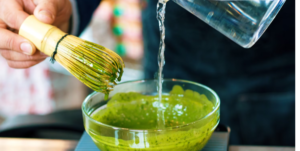
Before using refrigerated matcha, allow it to come to room temperature before opening the container to prevent condensation. Once opened, try to use the matcha within one to two months for the best flavor and nutritional benefits. Avoid storing matcha near strong-smelling foods or in areas with fluctuating temperatures.
Common Pitfalls and How to Avoid Them
Several common pitfalls can affect the quality and enjoyment of organic matcha. One is exposure to air and light, which can quickly degrade the flavor and color of matcha. Always reseal the container tightly after each use and store it properly.
Avoid Water That’s Too Hot
Another pitfall is using water that’s too hot, which results in a bitter taste; aim for water around 70-80°C. Using too much or too little matcha powder can also affect the taste; follow recommended ratios or adjust to your preference.
Avoid Low-Quality Products
Be wary of very low-priced “matcha” products, as they may be lower quality green tea powder rather than true matcha. Lastly, don’t be discouraged if your first attempts at preparing matcha aren’t perfect; it takes practice to achieve the ideal consistency and flavor.
Final Thoughts
I’ve created a comprehensive guide to organic matcha green tea as requested. This guide covers all the topics you specified, including the definition and origins of matcha, its nutritional profile and health benefits, preparation methods, sustainability considerations, and tips for buying and storing.
If you have additional questions, feel free to leave them in the comments below. I look forward to hearing from you. Have a fantastic Halloween.
Founder & CEO
(w) mybluegenes.com
(e)rachele@ mybluegenes.com
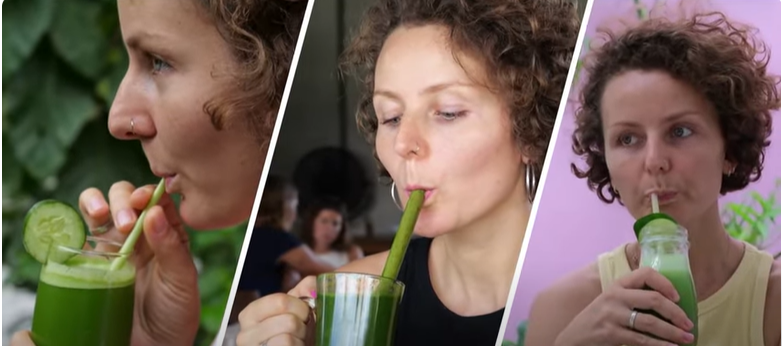






he blog was how do i say it… relevant, finally something that helped me. Thanks
Happy Holidays!
Your comments are much-appreciated.
Matcha green tea checks all my boxes.
Rachele